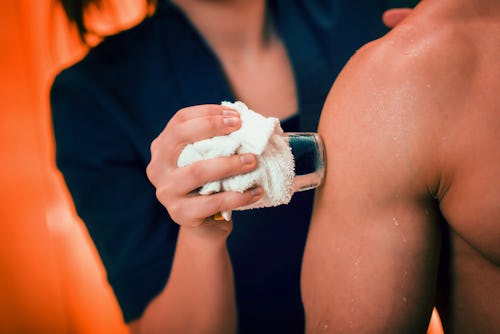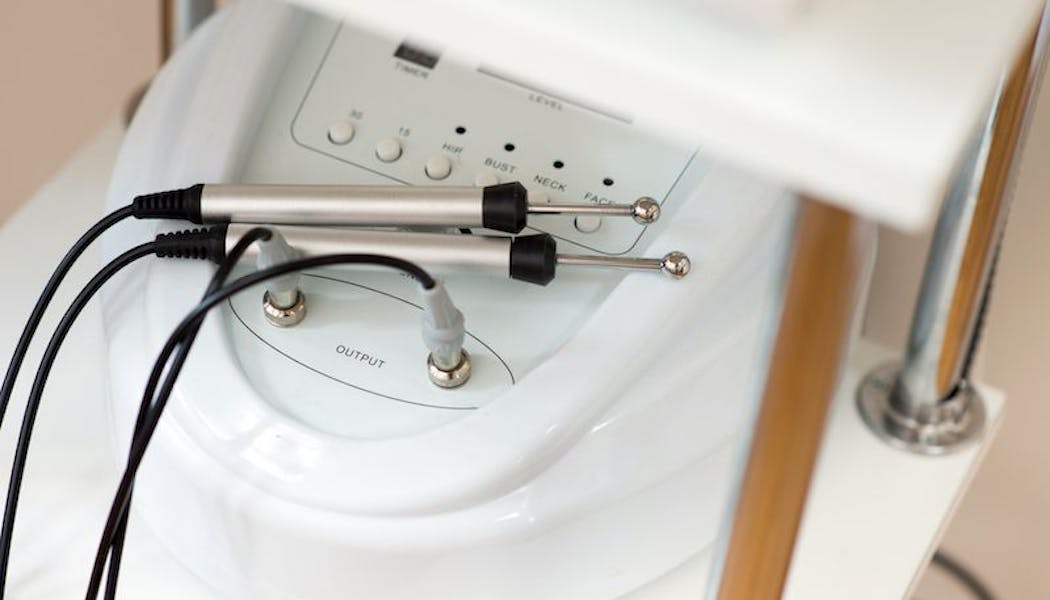-

The Use Of Moist Heat and Cryotherapy During Your Physical Therapy Treatments
Physical therapists often use treatment modalities (methods of treatment) like moist heat and cryotherapy. These modalities, especially when combined with other therapeutic interventions, can significantly enhance the effectiveness of treatment plans.

Moist Heat Therapy: Gentle Warmth for Healing
Physiological Benefits:
- Improved Blood Flow: Moist heat expands blood vessels, increasing circulation to the affected area, which helps in the healing process.
- Muscle Relaxation: It is effective in easing muscle spasms and relaxing tight muscles, thus reducing discomfort.
- Increased Tissue Elasticity: Heat therapy makes tissues more flexible, aiding in exercises that improve range of motion.
Moist heat therapy (hot packs) commonly are made of clay that is encased in canvas and soaked in a hot bath to heat them up. The hot packs are then wrapped in a towel or pad and applied to the affected area.
Cryotherapy/Ice: A Cold Touch for Pain Relief

Physiological Benefits:
- Pain Relief: The primary benefit of cryotherapy is its ability to numb the treated area, offering immediate relief from acute pain.
- Reduced Nerve Activity: Cold therapy slows down nerve signal transmission, which can help in managing pain.
- Decreased Muscle Spasm: It can also help in reducing the frequency and intensity of muscle spasms.
Cryotherapy and Pain Management: A Focused Approach

In recent times, the use of cryotherapy for pain relief has gained attention. While it’s known for providing immediate relief in acute conditions, its long-term effects on pain management are being studied. This therapy should be used under expert guidance to ensure its effectiveness and safety in pain management.
Cryotherapy or cold therapy commonly comes in the form of ice packs that are placed on the affected area for their desired therapeutic effects.
An ice massage is another way to directly apply cold therapy to the area in need.
FAQs
Click On A Question To View The Answer
When is moist heat therapy recommended?
It’s often suggested for chronic conditions like ongoing joint pain or muscle stiffness.
How does cryotherapy help in pain relief?
By numbing the affected area and slowing nerve signal transmission, cryotherapy can significantly reduce pain sensation.
Can these therapies be combined?
Yes, alternating between heat and cold therapy can be beneficial, depending on the specific condition and under professional guidance.
What is the ideal duration for applying these therapies?
Typically, 15-20 minutes is recommended, but it can vary based on individual needs and the therapist’s advice.
Your Physical Therapist Will Discuss The Use Of Moist Heat Or Ice/Cryotherapy And If They Should Be Part Of Your Treatment Plan
By integrating moist heat and cryotherapy into your treatment (especially at home), you can leverage their benefits for effective pain management and recovery.
Contact Us Today To Learn More About Our Physical Therapy Services.
You Can Call Us At (302) 376-5578 -
Microcurrent therapy is a treatment modality used to treat pain relief through the delivery of a low-level electrical current. The current is delivered to certain parts of your body in an attempt to relieve pain.
The frequency of the electrical impulses may vary depending on the type of device used and the treatment goals. The electrical waves produced by the microcurrent device are thought to stimulate energy production (ATP) which is necessary for cellular tissue repair and recovery.
Microcurrent therapy is often used to:
- Reduce/relief pain
- Stimulate tissue healing
- Reduce inflammation and/or swelling
Microcurrent treatment may be helpful for:
- Disc injuries
- Fibromyalgia
- Diabetic neuropathy
- Neuromas (overgrowth and scarring to a nerve after an injury)
- Tendinopathy (inflammation and/or swelling of the tendon)
- Acute (sudden) and chronic (long-term) musculoskeletal injuries
- Acute and chronic neuropathic (nerve) pain
- Arthritis
- Torticollis (the head is tilted to one side)
- Disc injuries/discogenic-and facet-based pain
- Headaches
- Plantar fasciitis (pain in the heel and foot)
- Sports injuries
- Wounds
Click here for more information about microcurrent.
If you’d like more information about microcurrent treatment and how it may help you, please contact us (302) 376-5578.

